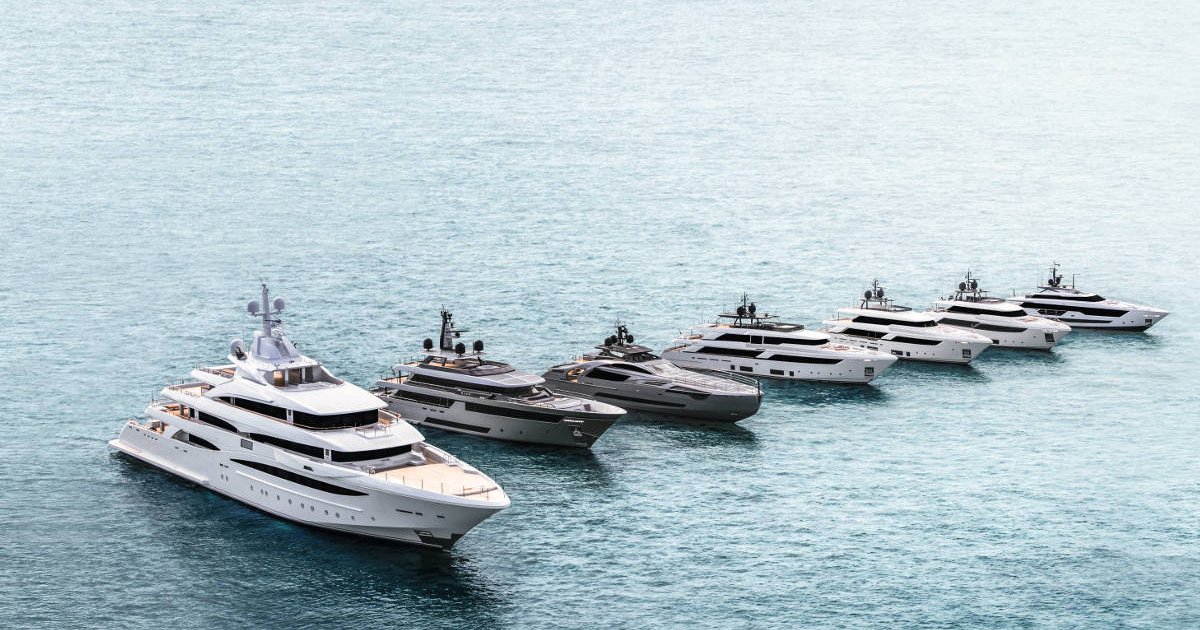Corporate Responsibility in Sustainable Yachting

The Ferretti Group corporate case study in sustainable yachting
In this article we review the content of the Ferretti Group’s sustainability report and their vision of sustainable yachting within the context of corporate responsibility.
Their main concerns are materials, energy efficiency and greenhouse gas emissions – ‘both at product and process levels’.
This phrase is crucial in understanding the shift that needs to take place in conversations around sustainable yachting today; while some sustainability standards place the emphasis firmly on the yacht itself (i.e. the product) we believe there is an urgent need to expand the perspective to include the processes that go into making that product, and indeed the wider corporate social responsibility of the business behind it.
For more on BioBlu’s services in helping yacht brands small and large deliver their own sustainability plan, see our Consulting page here or contact us here.
PHASE 1 OF A CORPORATE SUSTAINABILITY PLAN
There is no better way to begin the process of creating a corporate sustainability plan for sustainable yachting than undertaking an extensive stakeholder sounding process, ideally with an external consultant (to ensure the interviews are non-political and each stakeholder can speak freely, with anonymity).
This is exactly what the Ferretti Group appear to have done, mapping out their stakeholders and placing them into the following segments:
- the financial community (banks, shareholders)
- competitors, partners & customers (customers, brokers, partners)
- people and the wider community (employees, trade unions, local communities)
- regulatory bodies (certifications, public administration, legislature)
- NGOs, sector associations and the media (industry associations, environmental associations)
- supply chain (furniture, moulding, engines, IT, transport)
PHASE 2: AN ENVIRONMENTAL, ECONOMIC & SOCIAL MATRIX FOR CORPORATE RESPONSIBILITY
Given the size of this company, and their extensive list of stakeholders, some form of filter was needed. First, the Group deployed a matrix to identify the key sustainability issues that factored in competitor benchmarks, sector trends and a media analysis.
Another layer of analysis was then used to sort these themes along two axes, one for relevance to stakeholders and another for the relevance of ach topic base on the company’s activities.
This led them to four main categories:
- Product and customers
- Reduction of environmental impacts of the production process
- Value for the local area
- People
UN 2030 Sustainable Development Goals for Sustainable Yachting
We previously wrote about these ‘SDGs’ here.
In order to align their outputs with those of the wider sustainability movement, Ferretti then overlaid their key themes with those of the UN Sustainable Development Goals, namely:
- 8: Decent work and economic growth
- 9: Industry, innovation & infrastructure
- 12: Responsible consumption and production
- 13: Climate action
- 14: Life below water
PHASE 3: THE ROLE OF PRODUCT IN CORPORATE RESPONSIBILITY
Ferretti Group push the quality message hard in their sustainability report, and not without justification as there is real merit in doing things properly, building products that will last if not a lifetime then at least as long as is reasonably possible to minimize the creation of waste or landfill.
This raises the question of Life Cycle Design and again the Group are on top of this subject, as they put it,
‘integrating information on the environmental footprint of products at every stage of yacht development, directing research and innovation towards improving and optimising the consumption of natural resources’.
They go on to specify three main factors in a yacht’s sustainability performance:
- Efficiency of a yacht’s fuel consumption during use
- Yacht materials and component types
- A yacht’s end of life
By reducing the weight of a yacht, seeking out efficiencies in energy use and of course exploring hybrid propulsion systems, they see further reductions in a yacht’s environmental impact possible.
Responsible supply chain management is especially important when it comes to furniture, fittings and materials on board a yacht, although here the sustainability report is a little light in detail, especially when it comes to the integration of recycled, upcycled or sustainable materials with health product declarations and low-VOC off-gas emissions, for example.
PHASE 4: YACHT PRODUCTION IN A SUSTAINABILITY PLAN
The Group’s main fossil fuel consumption as part of yacht building is natural gas used for heating, as well as diesel and petrol when testing boats. There is then a sizeable consumption of electricity used to power production departments and lighting.
As a whole, energy consumption has broadly increased as the Group’s output has increased over time, meaning they are focused on seeking out efficiencies, with their Ancona shipyard held up as a model for the future thanks to its photovoltaic panel system.
Greenhouse Gas emissions are clearly a work in progress for the Group, with a promise that,
“in future it will be possible to carry out an in-depth analysis of its supply chain, both upstream and downstream of the production phase, to verify which categories are the most significant in terms of emissions and therefore carry out an in-depth analysis to estimate the main greenhouse gases produced”.
Water use is only given a passing comment in the sustainability plan as it is not a major player in the Group’s environmental impact, “water consumption remains low” they assure us.
Waste is sorted and hazardous waste is sent for regeneration.
PHASE 5: PEOPLE & COMMUNITY IN CORPORATE RESPONSIBILITY
The Group employ around 1500 members of staff with the sustainability report analysing their demographic breakdown from an equality perspective. A section explores Training & Development of personnel with more than 15,000 hours of training delivered in a year. A generous piece on health and safety is also an important inclusion, for obvious reasons, as well as various local community outreach initiatives such as family open days.
If you would like to discuss how BioBlu could help your organization prepare its own Sustainability Plan and Corporate Responsibility strategy, contact us here.
Comments are closed.

